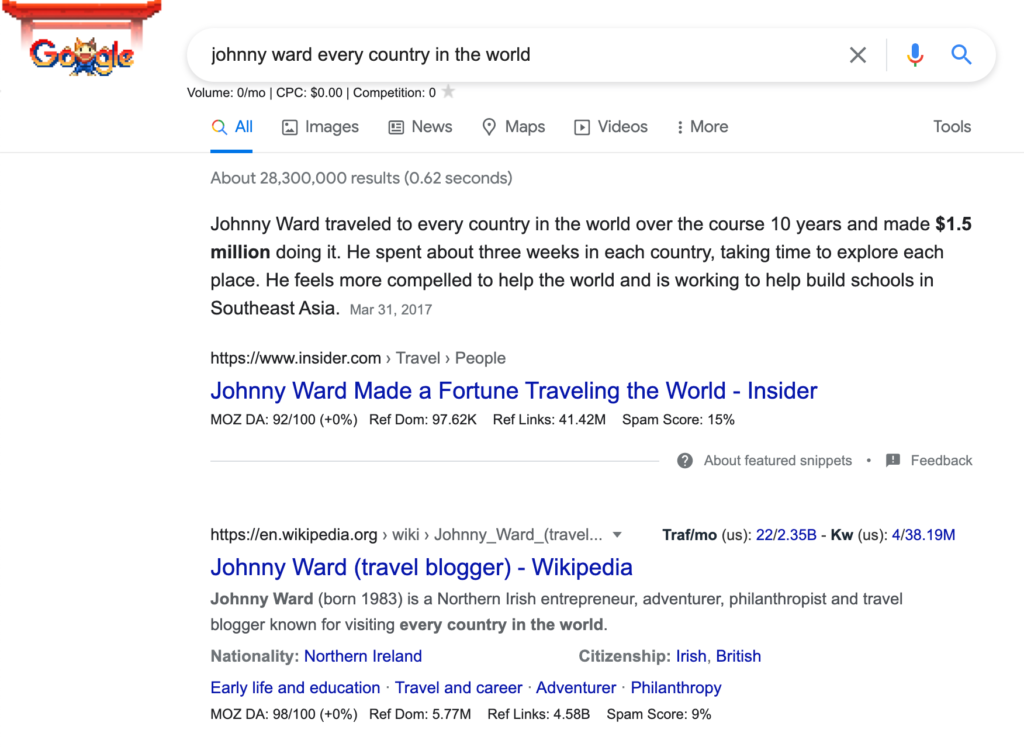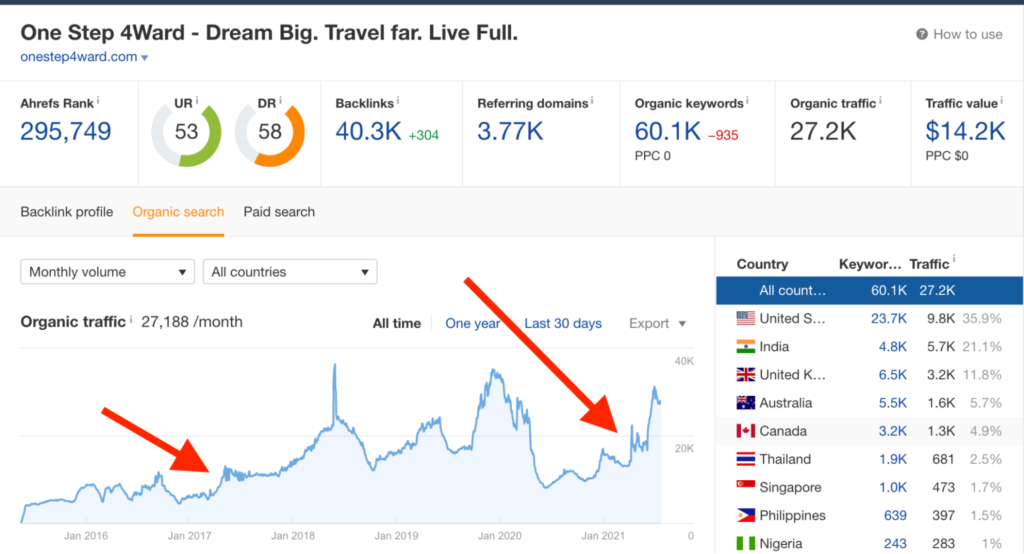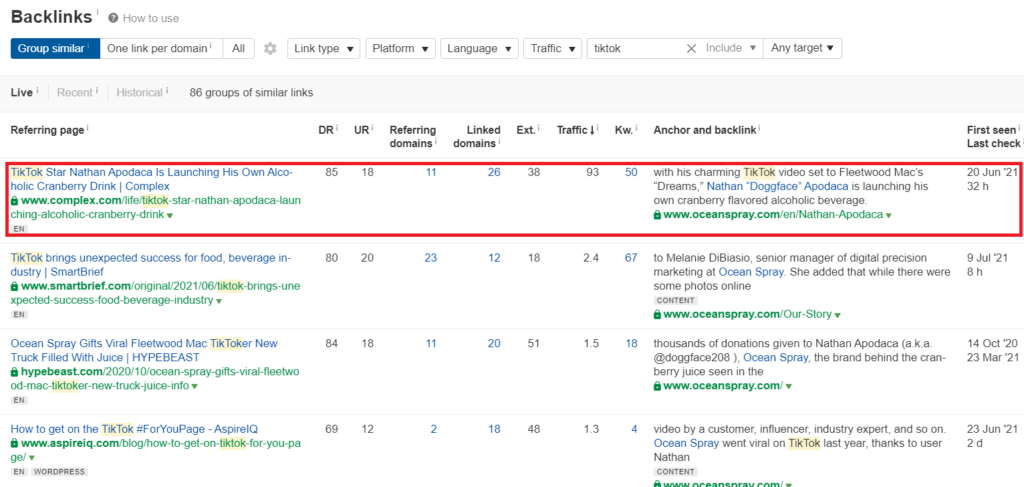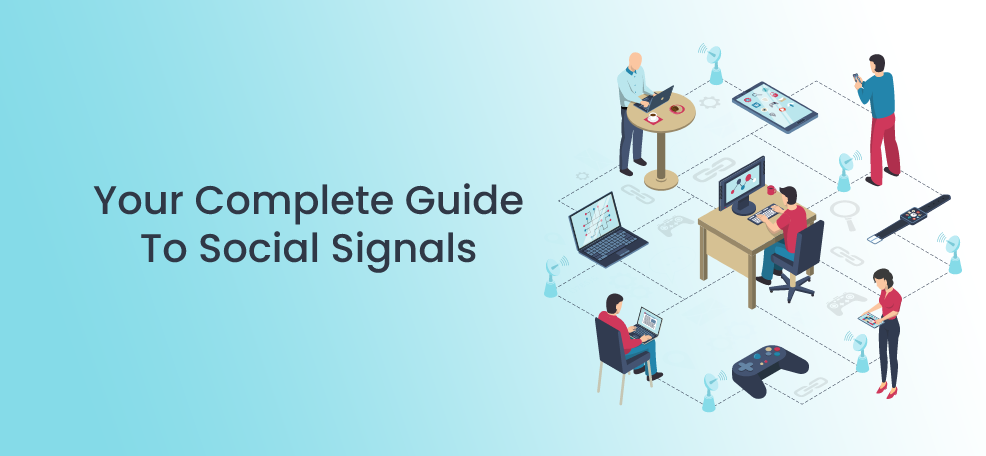If you’re involved in digital marketing, you’re almost certainly utilizing social media to generate leads and sales.
Don’t believe me? Just look at the statistics. Pew Research Centre found that 79% of parents on social media reported looking for information within their network. On the other hand, 32% (one in three) find social media networks a useful source of information.

These stats show that social media is where the action is and that’s where your brand should be. It’s a great platform for brand awareness and promotion.
But did you know that social media could help your SEO, too? Let’s talk about social signals.
How are search engines and social signals related?
Before we answer that question, it’s important to understand what social signals are. In simple terms, social signals are a reflection of your brand’s social media influence. These include metrics like reach, shares, and likes. It can also refer to the organic traffic your brand enjoys on social media platforms.
Social signals tell you how many people are talking about your brand. It also allows you to get feedback from both potential and existing followers.
So, how are social signals and search engines related? How does social media affect your search rankings?
The primary goal of any search engine is to provide users with the information they are looking for. When people find useful information, they tend to share it. When they share links to your site on their social media accounts, the amount of traffic to your website increases. The more people share your content, the more people will also visit your site.
Most search engines factor in a social media interaction.
For instance, Google has partnered with Twitter to feature tweets prominently in search results. If a tweet is frequently liked, shared, or retweeted, it is likely to show up in searches. Searching for news about the Argentina-Australia Olympic football match, for example, gives you the following results:

In short, social signals can make content appear in the search results. However, it won’t increase the search rankings of your content. Here, the relationship between your rankings and social signals is a case of correlation rather than causation. Let me explain.
The more people who see your content, the more likely you are to organically acquire backlinks. Now high-quality backlinks are a search ranking factor. Let me give you an example.
Johnny Ward is a travel blogger and the founder of a website called Onestep4ward. In 2017, he finished his travels to every country in the world. It’s a story that generated a lot of attention on social media, and then in the press.

All that press attention generated lots of backlinks to his website. Those backlinks make his site more authoritative and increase the likelihood of his content ranking on Google.

That sudden dip in traffic in January 2020 is most likely due to COVID-19. Few people are making travel-related searches in a lockdown.
More recently, he was part of a team that rowed across the Atlantic. It was another story that gained lots of attention. You can see there are jumps in organic search traffic following these events.

There is a correlation between those jumps in traffic and the new authority backlinks. Some of those links are also highly targeted, with anchor text that aligns with the keywords he is targeting.
How social signals can improve SEO?
Social signals help increase the reach of your content making it more likely that you organically get authority backlinks. Those backlinks can boost your search rankings. So how do you get those social signals that generate all of that exposure?
Here are three tips you can follow to generate more social signals from social media.
1. Create (authentic) shareable content
Remember that the users on social media are laypeople looking for useful information in a format that is easy to digest. Remember also that users do not have the time to look for ways to share your content. For instance, users are unlikely to navigate to another group let alone logging into Instagram, Twitter, or Tumblr, just to share their content.
So, make sure you write content that provides high value, is attractive and is easy to share.

Here are some ways you can ensure your content is shared:
- Post every day: That will always keep your brand fresh in the minds of your consumers.
- Use pictures: A picture speaks louder than a thousand words – that’s proven. Also true is the fact that pictures are more likely to attract users and be shared.
- Listen on social media: “Listening on social media” means monitoring what people are saying about your brand tells you what you should or should not do. You can also respond to criticism, hopefully turning negative feedback into positive ones.
- Organize contests and offer prizes: No matter how small the prize, the desire to win will drive people to share such content.
- Create partnerships : Collaborate with other brands and platform influencers to increase your visibility.
Finally, cover all the bases. It’s not enough to post on Facebook or Instagram alone. You must explore other social media channels including new and emerging ones. TikTok, for one, might be relatively new, but it is already becoming an excellent channel for viral content due to its collaborative nature.
The potential of TikTok as a viral marketing channel was demonstrated in 2020 when an Idaho man, Nathan Apodaca, posted a video of himself riding a skateboard down a highway after his truck broke down, taking a sip from a bottle of Ocean Spray cranberry juice while Fleetwood Mac’s “Dreams” plays in the background:

Since that video went viral, Ocean Spray has gone viral as well, with celebrities – and Ocean Spray’s CEO – all doing the “Dreams” challenge. Because of the accidental exposure through TikTok, Ocean Spray’s website has been linked back to by high-authority websites that published articles about Apodaca and his juice-drinking, longboarding trip to work:

Why was Ocean Spray so successful in harnessing the power of TikTok to improve its SEO? While the exposure from Apodaca’s video was accidental, adding a page for Nathan Apodaca on the company website was deliberate (as seen in the Ahrefs screenshot above) as it gave websites a page they could link back to whenever they mentioned the relationship between the brand and the content creator.
The brand also let the exposure from Apodaca’s video run its natural course and was careful not to rush into the space that Apodaca created, preserving the very reason the video became viral, which was its spontaneous and carefree nature.
What does this example tell us about the relationship between social signals and search ranking? Strictly speaking, social signals do not directly influence search performance. However, good content does result in exposure in the form of shares. If enough people share your content, high-authority websites are likely to feature your brand and link back to your website. These links then influence your search ranking.
2. Reach your target audience
Don’t worry. You don’t have to be on all social media platforms. Just determine where your target audience is and start from there.
We all know, after all, that simply blasting content on the web does not mean the right people are viewing it.
For instance, if you teach an online course about business analytics and you share it in a group for creative writers, you shouldn’t expect the content to gain traction. Instead, it will be completely ignored because it has no value for the members of that group.
However, show the same content to a group of consultants and watch them tell their friends about it. You’ll get even more traction if you share it with a more specific group, say, business analysts, because these are the people most likely to be interested in that course.

The point is, no matter how awesome and shareable your content is, if it does not reach the right audience, it is worthless. Determine your target audience – the people you hope will see and share your content – and ensure they see it. If it is good enough, it will quickly gain traction.
3. Increase Branded Searches
When you put a lot of work into getting your website to rank, you also need to be careful not to neglect your social profiles. When people look for businesses using branded keywords, Twitter or Facebook pages often appear in the top results. Here’s how a search for “IKEA” looks like:

You’ll notice that IKEA’s global and US pages are in the top four search results for the “IKEA” branded search. This didn’t happen by accident. Both pages have over 30 million likes and thousands of mentions, which implies that social media activity can indirectly affect search ranking.
Why would you want your social media pages to rank if your website is already at the top of the results? People who are doing branded searches are already interested in your products. While your website can provide a lot of information, you tend to update your social media pages more often, whether it’s to tease a new product or announce a flash sale.
Posting meaningful content on your social media accounts will give you more reasons to engage with your followers, which will in turn boost branded searches for your business.
Bottom Line
Social media signals do not directly impact the ranking of business sites. However, they can influence the way the public perceives your brand, which influences how Google ranks your site.
The first way to use social signals to boost your ranking is to create shareable content. When more people share your content, your brand gains exposure and catches the attention of high-authority websites. These websites can then link back to your site and allow your site to benefit from their domain rating.
Second, publishing content specifically for your target audience will ensure that your message gets across to users who are more likely to appreciate and share it. This increases site traffic, which is another factor Google uses to rank search results.
Finally, a strong social media presence can help your business do better in branded searches. When people do brand searches, it’s an indication of their interest in what you have to offer. Maintaining active social media pages will give these users a different view of your brand and offer them access to frequent updates.
So, as early as now, strive to get those shares, likes, and comments. Create content that’s shareable, reach your target audience, and build trust in your brand.
Author Bio:
Baidhurya Mani is the founder of SellCoursesOnline.com. He regularly shares tips, tools, and strategies to help creators and entrepreneurs build a successful online course business.




